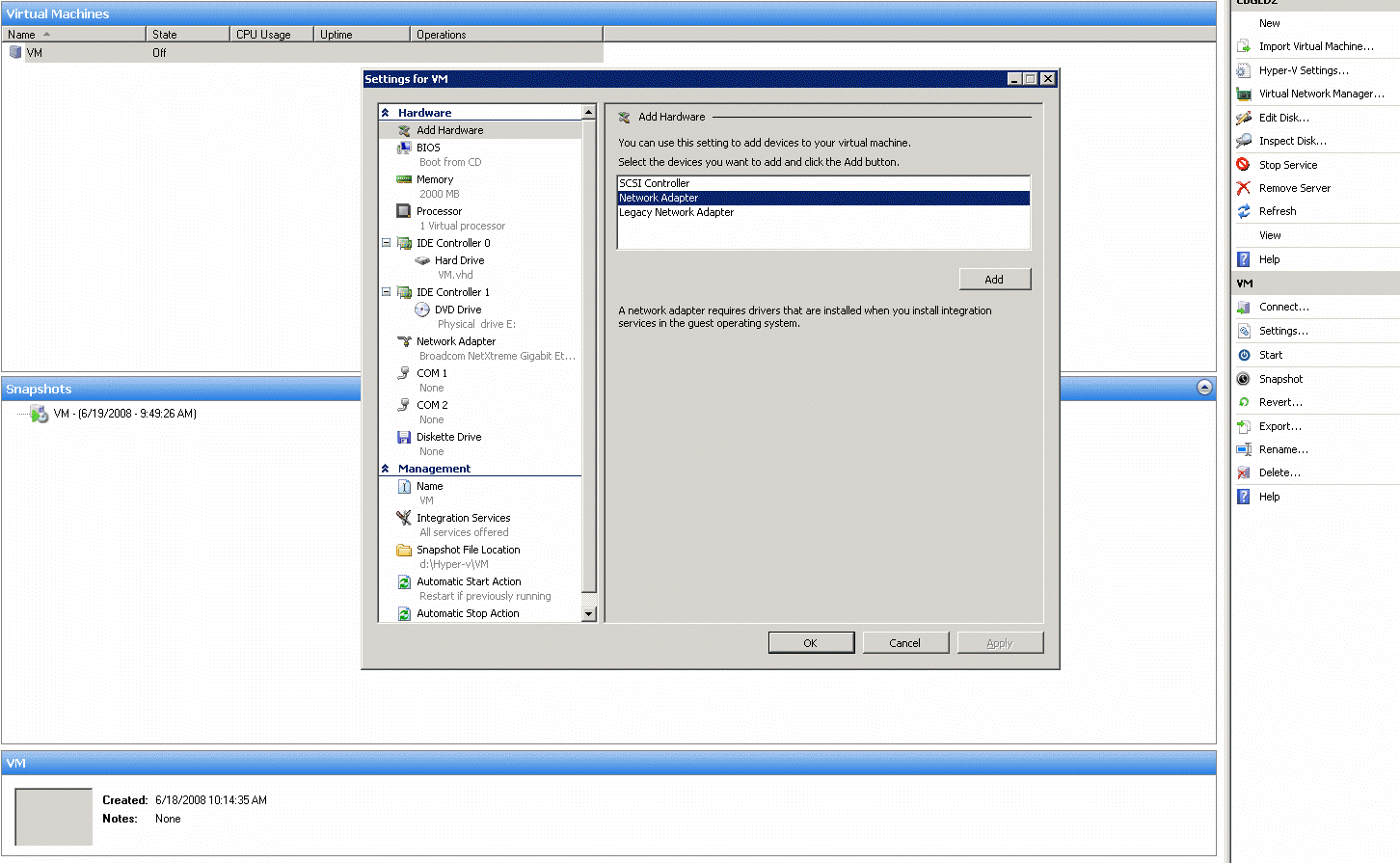
Virtual machines have access to this physical network via the physical NIC, which is linked to the external switch to which the virtual network adapter is connected. Three types of virtual switches are available: external, internal, and private, as shown in Figure 3.1.įigure 3.1 The three types of virtual switches available in Hyper-V EXTERNAL VIRTUAL NETWORKSĮxternal virtual networks are bound to a physical network card in the host. A Hyper-V host can have many virtual switches created. One or more virtual network adapters are added to a virtual machine, and then each virtual adapter is attached to a virtual switch that was created at the Hyper-V host level. One type is the virtual network adapter (as discussed in the previous chapter, two types of network adapters are available for a generation 1 virtual machine, but their connectivity options are the same). Virtual machines have numerous virtualized resources. Moreover, in some cases, they need to communicate only with each other and not externally to the virtualization host. However, additional options are available because multiple server instances exist on a single physical asset. With virtualization, the requirements for network connectivity are just as important as they are for a physical server. It may require different network connections to connect to different networks, such as a separate, nonrouted network for cluster communications between servers in a failover cluster, a separate network for iSCSI traffic, a separate management network, and so on. The server may be part of a VLAN to provide isolation and control of broadcast traffic.

Architect the right network design for your Hyper-V hosts and virtual machines by using the options available.

This technology is covered in detail, along with all of the various options available to you.

Network virtualization allows virtual machines to be abstracted from the physical network fabric, allowing complete isolation between virtual networks and the ability to use IP schemes independently of the physical network fabric.
#HOW MANY MAC ADDRESSES ARE AVAILABLE FOR VIRTUAL NETWORK ADAPTERS, CREATED BY HYPER V? WINDOWS#
This goal is fully realized with version 2, introduced in Windows Server 2016. Windows 2012 introduced network virtualization, which started to close the remaining gap between virtualization and the goal of complete abstraction of the virtual machine from the underlying fabric. Features that are specific to virtual machines are covered, as well as network technologies in the operating system that can bring additional benefit. This chapter covers the networking elements that enable virtual machines to communicate with each other and with the rest of your environment.


 0 kommentar(er)
0 kommentar(er)
